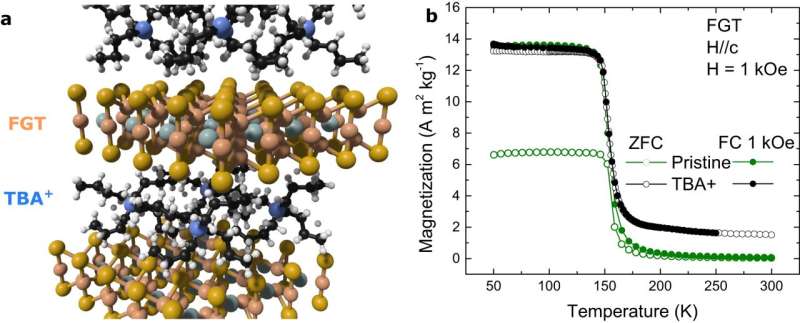This article has been reviewed according to Science X's editorial process and policies. Editors have highlighted the following attributes while ensuring the content's credibility:
fact-checked
trusted source
proofread
Researchers improve magnets for computing

As demand rises for increased data storage and faster-performing computers, researchers are creating a new generation of materials to meet consumers' expectations.
"How can we design new materials so that they can store data with less volume, less cost and using less power?" asked Srinivasa Singamaneni, Ph.D., associate professor in the Department of Physics at The University of Texas at El Paso
The answer may be in a new type of magnet discovered by Singamaneni and UTEP physicists. The material is described in npj 2D Materials and Applications.
"Many researchers are exploring quantum magnets to revolutionize the future of computational power," Singamaneni said. "Lots of tools use traditional magnets—laptops, speakers, headsets, MRI scanners—and these magnets can be replaced by quantum magnets one day."
Singamaneni, the lead author of the new study, has been working on a class of magnets known as van der Waals magnets since 2021. The new 2D magnets—which have a length and width but are only one layer thick—have huge potential in the computing world because of their tiny size, Singamaneni said.
Van der Waals magnets, however, have only ever worked at temperatures below freezing—until now.

Alongside a team of scientists from Stanford University, The University of Edinburgh, Los Alamos National Lab, the National Institute of Standards and Technology (NIST) and Brookhaven National Lab, Singamaneni has discovered that adding a low-cost organic material—known as tetrabutylammonium—between the magnet's atomic layers allows the magnet to work in temperatures of up to 170 degrees Fahrenheit.
"Van der Waals magnets don't have practical applications right now because of their temperature constraints," Singamaneni said. "My approach is unique because we've shown that a simple chemical treatment to a distinct magnet can push boundaries of 2D magnetism; this could be quite transformative for the industry."
The team has demonstrated the magnet's potential at the lab level but plans to continue studying and perfecting the material for use in computing.
Additional authors on the study are UTEP alumnus Hector Iturriaga, now at Stanford University; UTEP graduate student Luis M. Martinez and UTEP scientists Sreeprasad Sreenivasan, Ph.D., and Mohamed Sanad, Ph.D.; NIST scientists Thuc Mai, Ph.D., Adam Biacchi, Ph.D., and Angela Hight Walker, Ph.D.; University of Edinburgh scientists Mathias Augustin, Ph.D., and Elton Santos, Ph.D.,; Los Alamos National Lab's Yu Liu, Ph.D.; and Cedomir Petrovic, Ph.D., of Brookhaven National Lab.
More information: Hector Iturriaga et al, Magnetic properties of intercalated quasi-2D Fe3-xGeTe2 van der Waals magnet, npj 2D Materials and Applications (2023). DOI: 10.1038/s41699-023-00417-w
Provided by University of Texas at El Paso





















